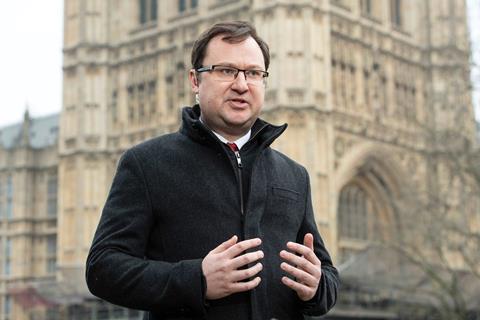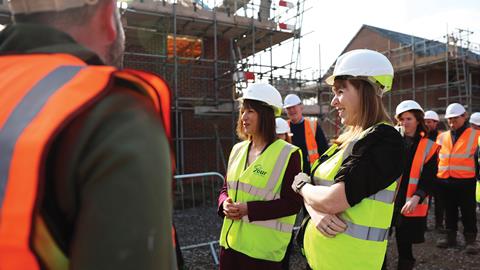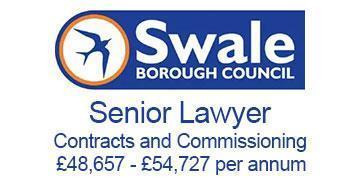The prime minister says the country needs to ‘build, baby, build’ to alleviate the housing crisis. But as planning lawyers tell Maria Shahid, there are daunting obstacles standing in the way of his ambitious targets
The low down
What really stands in the way of the government’s housebuilding target of 1.5m new homes? Deputy prime minister and housing secretary Angela Rayner MP has sniped at ‘newts’ and ‘nimbys’. But planning and construction lawyers warn that the impediments are more systemic. They are calling for a standardised approach to ‘section 106’ agreements, which govern the developer contributions towards local infrastructure such as schools and transport links, and latterly social housing provision. Housing finance rules could be changed to allow homes with planning permission to be built. The Building Safety Regulator also needs to raise its game. And while a pledge to provide hundreds more planning officers is welcome, local authorities are notably short of lawyers.
Navigating a shifting policy landscape is the bread and butter of planning lawyers, especially in relation to housing, infrastructure and energy. Many view the ambitious declarations of new governments with a degree of understandable cynicism, borne of experience.
Nevertheless, the announcement early last month that chancellor Rachel Reeves will nearly double government spending on affordable housing in England has been welcomed by the sector. Nearly £40bn will be allocated to local authorities, private developers and housing associations. Planners remain concerned, nevertheless, that many obstacles stand in the way of the government’s housebuilding target of 1.5m homes this parliament.
'The precarious viability of many schemes is still a really huge issue, with high construction costs, as well as regulatory issues around building safety'
Simon Ricketts, Town Legal
‘In terms of policy, we are definitely moving in the right direction,’ notes Simon Ricketts, partner at Town Legal, London. ‘But it’s the external influences on development outside the planning system, which are probably of most concern.’
There is, he says, ‘still a lot of nervousness from clients’ as ‘there aren’t many schemes that come as a neatly packaged proposal to proceed’.
Ricketts adds: ‘The precarious viability of many such schemes is still a really huge issue, with high construction costs, as well as regulatory issues around building safety and a still-fragile economy when it comes to rental values. So, however developer-friendly the planning system may become, it’s still got to be a profitable process for a developer.’
Section 106: room for improvement
The time frames in which so-called section 106 agreements are being negotiated are a major obstacle to further development, say planners. First conceived in the Town and Country Planning Act 1990, the agreements made between developers and local authorities were designed to mitigate the local impact of a new development through developer contributions towards local infrastructure such as schools and transport links. Over time, however, these agreements have become the preferred vehicle for developing affordable housing, accounting for 38% of affordable homes delivered annually.
Jade Chalmers, head of planning and construction at Howard Kennedy, explains: ‘A lot of the work we do is negotiating section 106 agreements for developers, builders and landowners, but they are taking far too long. You can have a very straightforward section 106 agreement, which should take a week to deliver, but it’s taking a year.’
The Home Builders Federation (HBF) submitted a Freedom of Information request in May to planning authorities ‘to better understand the current state of section 106 agreement timelines’. It published the results in a report, finding that ‘in just two years, the average time required to finalise an s106 agreement had increased by 90 days – a 20% increase’.
Those dealing with section 106 agreements at local authorities ‘are often quite inexperienced and not used to the complexities of the negotiations’, says Pamela Chesterman, a partner at Irwin Mitchell. ‘So, on the one hand, central government seems to be pushing money to try and incentivise these schemes to come forward, but it’s not tackling the wider issues.’
She adds: ‘As lawyers, we can turn section 106 agreements around relatively quickly if the local authority is engaging and if we know what the mechanisms will be.’
Several suggestions to improve delays have been made by the federation, one of which is to increase the resourcing of local planning departments. Last year, the government promised to recruit 300 new town planners for the public sector by 2026, and has more recently increased planning fees. But planning lawyers remain unconvinced that this is enough to tackle a deep-rooted resourcing crisis.
It is not just planning departments, but also legal departments that are under-resourced, says Chalmers: ‘You could wait a month to hear from the planning solicitor at the council, then they go back to their planning officer, and then it’s another month, and it just adds up.’
Stuart Tym, a planning partner at Knights, says that mortgagee in possession clauses also add to delays in negotiations. ‘The mortgagee in possession clause deals with what happens if that RP [registered provider] hits financial difficulties,’ he explains.
‘If you have a commercial bank charge on the property, they will want to control the marketing period,’ Tym notes. ‘The National Housing Federation standard clauses are designed to give the local authority or RP a three-month window in which to purchase the property, with the bank only able to market it at full market value once that process has been exhausted, and [this is] accepted by around 90% of local authorities.
‘The problem is that, with some local authorities, there is still this fear that they are going to lose the affordable housing, and they resist this fairly standard clause.’
Another federation recommendation to streamline the process is to develop nationally agreed section 106 templates.
Tym believes that this would go some way to addressing delays: ‘One of the biggest issues we have got in planning at the moment is that there are around 320 local authorities, all of whom are wanting to do something slightly different.’

Registered provider reluctance
Delivering affordable housing is a cornerstone of the government’s pledge of 1.5m new homes. Earlier this month, the government set out its ambitions for a ‘social rent revolution’ through the new £39bn ‘Social and Affordable Homes Programme’ to deliver 300,000 new residences in this category.
The response from the planning community has been cool. ‘Social rent is the most laudable affordable rent tenure, [as it’s] aimed at those who really cannot afford a roof over their heads,’ says Tym. The target ‘is six times higher than the number actually delivered over the last decade, so it is a big ask’.
A major barrier to the supply of more affordable housing is the lack of interest of RPs, say planners. (RPs, mostly housing associations, are entities registered with the Regulator of Social Housing which provide, or intend to provide, social housing. Some are ‘for-profit’.) On a typical private development, a developer will allocate a proportion of homes to an RP through a section 106 agreement, which will then take ownership of the homes and manage them either long-term for rent, or through shared ownership. However, RPs are reluctant to take affordable housing units on as new developments.
Tym notes: ‘It all goes back to the £39bn that has been promised. We’ve got developers all around the country that are building sites with affordable housing requirements on them, but RPs aren’t interested because they don’t have the funding stream.’
He adds: ‘The government’s latest affordable homes target doesn’t deal with the fact that a lot of affordable housing can be delivered by developers.’ This way of delivering ‘affordable’ housing has its problems, though. As Tym notes: ‘[It] isn’t going to those who need it most, as social rent is an expensive product to provide – as it comes with the biggest discount – and RPs are not easily able to fund it.’
A report by the federation found that as of October 2024, 17,400 affordable homes in England and Wales with planning permission could not be built due to a lack of financial capacity among RPs.
One of several solutions suggested by the federation in a progress report this month is to allow housing associations to spend state funding grants which are designed to support the capital costs of developing affordable housing in England through the Affordable Homes Programme, until a longer-term solution can be found. Restrictions on the use of such funding, which include ‘value for money’, meeting ‘home ownership objectives’ and complex comparators with market rates are judged by some to have held the programme back.
Tym agrees that releasing the grant funding may be one of the quickest ways of tackling this issue: ‘The biggest change I would make to the system at the moment to encourage more development is to put a release on the rules on how that Affordable Homes grant is spent for a short period of time, to allow RPs to use it to buy directly from developers in a way that they are not currently able to do.’
A coordinated effort from developers, RPs, local authorities and the government is needed to ensure that affordable housing is delivered through the section 106 system to the communities that need them, declares the federation.
For now, planning lawyers are left acting as go-betweens in a system that requires more than just new targets.
Upgrading the building safety regulator
The Building Safety Regulator (BSR) is an independent body that was established by the Building Safety Act 2022 in the aftermath of the Grenfell Tower disaster. How is it performing?
Robert Bruce, partner, Freeths
‘After the terrible Grenfell incident, there has rightly been an increased focus and new regulatory regime for building safety of tall buildings to protect residents and the wider public. However, it is apparent that this has not been matched with resourcing and the capability of the new Building Safety Regulator to check and sign off on the safety of tall buildings within a reasonable timescale. With the housing crisis in the UK continually deepening, impacting the hopes and aspirations of young people and a root cause of significant social problems, reform of the regulatory regime is very welcome and essential if there is to be any chance of the government coming close to its target of building 1.5m homes this parliament.’
Adam Clapp, senior associate, RWK Goodman
‘The BSR’s lengthy approval delays at key gateways have been a growing concern since its introduction. While the BSR was a vital step toward stronger oversight, the Building Safety Act has fundamentally changed industry practices, introducing a complex framework that’s been difficult for everyone to navigate. A lack of detailed guidance, clear competency structures and secondary legislation have left a critical gap in the new regime, meaning many users still struggle to understand what “good” looks like in practice.
‘Although the government appears to have recognised the challenges and is listening to industry feedback, the recent action risks merely “papering over the cracks”. Clients increasingly warn that urgent action is needed now, well before the outcome of the House of Lords Industry and Regulators committee’s inquiry into the BSA concludes. Without proper funding, adequate resourcing, and clear practical guidance from the BSR, delays will persist and threaten to undermine the industry’s ability to deliver on housing targets.’
Colin Jones, partner, HCR Law
‘Reported reforms include the recruitment of additional staff and the fast-tracking of new-build applications, so this is a step in the right direction and should be welcomed. While the regulator plays a vital role in overseeing building safety, accelerating housing delivery also depends on a more efficient and responsive planning system. Under-resourced local authority planning departments remain a significant bottleneck in the process, so this also needs to be addressed.’
Building Safety Regulator
The introduction of new fire safety regulations by the Building Safety Act 2022 led many RPs to prioritise existing developments over new schemes, say lawyers. ‘The act was absolutely needed, because you can’t have unsafe buildings, but the cost is staggering. You’re seeing that at RP level as well, where they are having to go through all of their existing stock and make good any issues,’ explains Chalmers.
The act introduced the Building Safety Regulator (see box), which is responsible for ensuring that developers are complying with new requirements for high-rise residential buildings over 18 metres.
Any housing scheme which falls within the act’s remit will need to pass through a series of ‘gateways’ at various stages in the build process.
Gateway one, at the planning stage, requires a statement to be submitted regarding fire safety considerations.
Gateway two requires a full building control application to be submitted to the regulator. This must include detailed plans and specifications, as well as fire and structural safety information. Construction on a site cannot start until pre-construction approval has been granted.
'I’ve got lots of clients who are saying, ‘I’ve got my planning permission, and I just want to start on site, but I can’t get my gateway two sign-off’. This stage of the process is the biggest challenge for them right now'
Jade Chalmers, Howard Kennedy
A third and final gateway leads to certification, after which the building can be registered with the regulator and thereby occupied.
Government guidance notes that the regulator ‘will take up to 12 weeks to assess applications for new higher-risk buildings’. However, the reality is proving to be otherwise on many schemes; with the second gateway in particular causing construction delays.
Chalmers says: ‘I’ve got lots of clients who are saying, “I’ve got my planning permission, and I just want to start on site, but I can’t get my gateway two sign-off.” This stage of the process is the biggest challenge for them right now.’
Last September, in a written parliamentary answer, housing minister Rushanara Ali said that by 30 June 2025, only 2% of 668 applications submitted had been determined in the required 12-week time frame. She also revealed that the regulator had rejected 42% of applications received to that point.

The House of Lords Industry and Regulators Committee, chaired by Baroness Taylor (Labour peer Ann Taylor), launched an inquiry into the regulator in mid-June. This was in response to mounting concerns about delays in the gateway process slowing down housing delivery. The inquiry is seeking views on whether ‘the BSR has the skills and resources required to ensure the safety of all buildings and its residents in the process of approving applications for high-rise buildings’.
Just last week, meanwhile, the government announced that the regulator, which is currently administered by the Health and Safety Executive, will become part of a new agency under the remit of the Ministry of Housing, Communities and Local Government. There will be a new ‘fast-track process’ designed ‘to enhance the review of new-build applications, unblock delays and boost sector confidence’.
The reforms aim to ‘pave the way for the creation of a single construction regulator, as recommended by the Grenfell Tower Inquiry’.
Building safety minister Alex Norris noted: ‘This new organisational structure reflects the government’s commitment to prioritising building safety in its drive to build 1.5m new homes, and builds on the strong foundation created by the HSE in establishing the BSR.’
One must hope so, but 1.5 million still looks a very long shot indeed.
Maria Shahid is a freelance journalist
































No comments yet